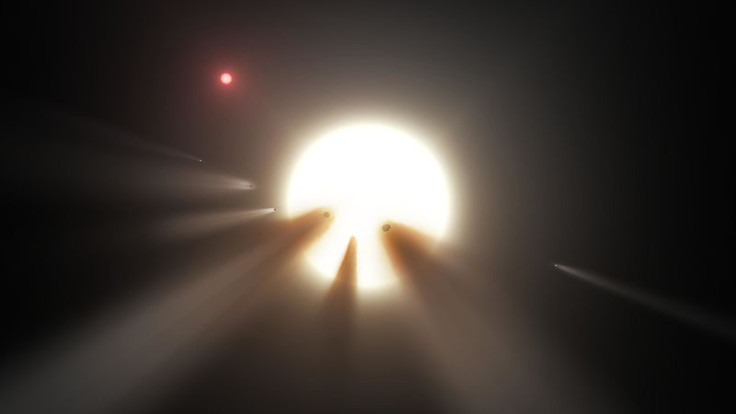KIC 8462852: What we learnt about the bizarre alien megastructure star in 2016
We've largely ruled out the idea of a Dyson Sphere, but that doesn't make KIC 8462852 any less of a mystery.

In 2015, a highly unusual star was discovered. KIC 8462852 displayed extremely unusual dimming patterns – something was blocking out a huge proportion of its light at irregular intervals. A planet like Jupiter blocks around 2% of the light from the Sun. Something passing by KIC 8462852, however, was (at times) blocking up to 20% of the light.
What is causing this is not known, but one suggestion that an advanced alien civilisation had built a huge structure – or Dyson Sphere – around the star to harness its energy. SETI scientists started looking for radio signals coming from this region of space, but came up blank.
Since then, there has been a huge amount of research into what could be causing this mystery dimming. Here's what we learned over the last 12 months.
It's not comets
One of the theories about KIC 8462852 is that its bizarre dimming was the result of a family of comets swarming the star. But this cannot be the case, Louisiana State University astronomer Bradley Schaefer said. He went through Harvard's historical records and found the dimming has been taking place for over a century. This makes the comet theory implausible – to have this level of dimming, you would need 648,000 giant comets (each with 200 km diameter) all to all pass the star within the last century.
He wrote: "KIC 8462852 is suffering a century-long secular fading, and this is contrary to the various speculation that the obscuring dust was created by some singular catastrophic event ... it is implausible that such a mechanism could start up on a time scale of a century, or that it would start so smoothly with many well-spaced collisions."
Some of the dimming is down to instruments

A team of scientists was looking at how the instruments used to record KIC8462852's dimming over the last century might be responsible for some of the observed changes. The researchers, from Vanderbilt University, looked at the 500,000 photographic glass plates used to record the star. Over the years various telescopes and cameras had been used.
To see if changes related to the instruments, scientists looked at variations in the brightness of comparable stars. Their findings showed many had a similar drop in intensity during the 1960s – which could partially explain why there was a change.
However, the other dimming seen was very real. Michael Hippke, an author on the study, added: "What does this mean for the mystery? Are there no aliens after all? Probably not! Still, the dips found by Kepler are real. Something seems to be transiting in front of this star and we still have no idea what it is."
Dimming pattern is weirder than we thought
Over the four years Kepler observed KIC 8462852, the patterns of dimming were very strange. It faded at a rate of 0.34% for the first thousand days, before dropping by 2% for 200 days. After this it levelled off. Published on the preprint server arXiv.org, the scientists said there is no known or proposed stellar phenomena that would explain this unusual pattern.
In an interview with Gizmodo, study author Ben Montet said he was not expecting this result: "The part that really surprised me was just how rapid and non-linear it was," he said. "We spent a long time trying to convince ourselves this wasn't real. We just weren't able to."
Massive disk of dust?
Another young star was found with the same weird dimming patterns as KIC 8462852. EPIC 204278916 is extremely young – between five and 11 million years old – and its dips in brightness can block as much as 65% of light at times. The thing causing this dipping appears to be a protoplanetary disk that is tilted so at certain times, it blocks light from the star.
The study, which appears on arxiv.org, suggests that if KIC 8462852 is much younger than is proposed, a similar disk of dust might be blocking the light from the star. No such disk has ever been observed for the star, however.
Interstellar junk and an undiscovered star
Another proposal is that the dimming is from a huge swarm of comets and planetoids and another, as of yet undiscovered, star that sits along the same line of sight. They looked at the smaller dips in brightness – ones ranging from between 0.1% and 7%. They found the dimming appeared to be coming from a different source.
As a result, they suggest that some of the unexplained dips are coming from this star, and not KIC 8462852. As a result, the very big dips observed at the star could be explained by a swarm of comets and planetoids flying between the two stars. "We consider a large swarm of interstellar objects ranging in size from small comets to planetoids unrelated to the target star, travelling in the interstellar space, which happened to cross the line of site to the target and, perhaps, its near- neighbours on the sky," they wrote.
© Copyright IBTimes 2025. All rights reserved.






















